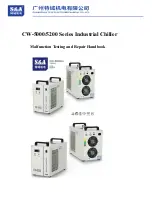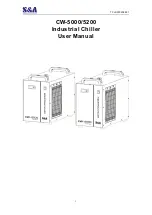
Installation Mechanical
30
RTAF-SVX001K-EN
Entering Chilled Water Piping
•
Air vents to bleed the air from the system (to be placed
on the highest point)
•
Water pressure gauges with shutoff valves
•
Vibration eliminators
•
Shutoff (isolation) valves
•
Thermometers if desired (temperature readings
available on chiller controller display)
•
Clean-out tees
•
Pipe strainer
Leaving Chilled Water Piping
•
Air vents to bleed the air from the system (to be placed
on the highest point)
•
Water pressure gauges with shut off valves
•
Vibration eliminators
•
Shutoff (isolation) valves
•
Thermometers (temperature readings available on the
chiller controller display)
•
Clean-out tees
•
Balancing valve
Waterbox Drains and Vents
RTAF chillers are equipped with two 1/2” drain
connections, one located on each waterbox. Waterboxes
also include vent connections to assist in bleeding air from
the chilled water loop. These vent connections should not
be assumed to be capable of venting attached chilled
water piping. See
for vent and drain
locations.
In order to completely remove water from the evaporator
tubes and waterboxes, vent and drain connections on
both
waterboxes should be opened. Use pressurized air to
ensure all water is removed from the evaporator. In
addition, two-pass
supply
waterboxes should have
drainage capability through attached supply water piping.
Incomplete drainage increases the risk of damage due to
expansion associated with trapped water freezing.
Note:
If evaporator will be drained for winter storage, the
heaters must be disconnected to prevent
overheating.
For shipment, drain plugs are removed and placed in a
plastic bag in the control panel, and vent plugs remain
installed. Each drain and vent must be piped with a shutoff
valve, or plug installed, prior to water pump operation.
For units with free-cooling option (model number digit 42
= H), chiller is equipped with three additional 1/2in NPT
drain valves - one on each side of the water strainer and
one on the lower header. A vent/bleed valve is located on
the upper header.
Pressure Gauges
Install field-supplied pressure components as shown in
. Locate pressure gauges or taps in a
straight run of pipe; avoid placing them near elbows.
To read manifold pressure gauges, open one valve and
close the other (depending on the side of the desired
reading) to prevent errors resulting from differently
calibrated gauges installed at unmatched elevations.
Pressure Relief Valves
Install a water pressure relief valve in the evaporator inlet
piping between evaporator and the inlet shutoff valve.
Water vessels with close-coupled shutoff valves have high
potential for hydrostatic pressure buildup on a water
temperature increase. Refer to applicable local codes for
relief valve installation.
Evaporator Flow Switch
The flow switch is factory-installed and programmed
based on the operating conditions submitted with the
order. The leaving evaporator temperature, fluid type and
fluid concentration affect the selected flow switch. If the
operating conditions on the job site change, the flow
switch may need to be replaced. Contact your local Trane
Sales office for more information.
The sensor head includes 3 LEDs, two yellow and one
green. Wait 15 seconds after power is applied to the sensor
before evaluating LEDs for flow status. When wired
correctly and flow is established, only the green LED
should be lit. Following are the LED indicators:
•
Green ON, both yellow OFF — Flow
•
Green and outside yellow ON — No Flow
•
Center yellow ON continuously — Miswire
NOTICE
Waterbox Damage!
Failure to follow instructions could result in damage to
the waterbox.
Do not over-tighten or use excessive Teflon® pipe tape
when installing valves, drains, plugs and vents on
waterboxes.
NOTICE
Flow Switch Damage!
Incorrect voltage application could cause damage to
the flow switch.
Flow switch is on a 24V circuit. Do NOT apply 120V to
the flow switch.
















































